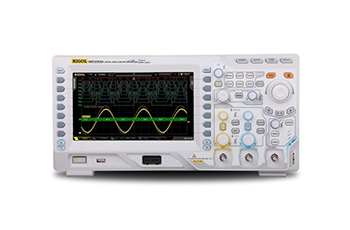Oscilloscope: Features and Applications
An oscilloscope is a very versatile electronic measuring instrument. It can transform invisible electrical signals into visible images, which is convenient for people to study the changing process of various electrical phenomena.Today we will introduce the features and applications of oscilloscopes. We hope that after reading, you can know the usage of oscilloscope.
Features
- The oscilloscope is small in size, light in weight, easy to carry and has LCD display.
- Digital oscilloscopes can store waveforms for long periods of time. A variety of operations and analysis such as zooming in on the stored waveform can be performed.
- Digital oscilloscopes are ideal for measuring single-shot and low-frequency signals. There is no analog oscilloscope flicker when measuring low frequency signals.
- Digital oscilloscopes have more triggering methods. In addition to pre-triggering that analog oscilloscopes do not have, there are logic triggering, pulse width triggering, etc.
- The numbers can be understood with computers, printers and plotters through GPIB, RS232, USE interfaces, and can be printed. It can also be used for analyzing files.

- Distortion is relatively large. Since the digital oscilloscope is displayed by waveform sampling, the fewer the sampling points, the greater the distortion.
- The measurement is complicated and the signal capability is poor. Due to the limited number of sampling points of the digital oscilloscope and the lack of brightness changes, many waveform details cannot be displayed.
- Artifacts and aliased waveforms may appear. When the sampling clock frequency is lower than the signal, the displayed waveform may not be the actual frequency and amplitude.
Application
When it comes to the usage of an oscilloscope, it is essential to know the application of the oscilloscope. So where can oscilloscopes be used?
Voltage measurement
Any measurement made with a 300 MHz oscilloscope boils down to a voltage measurement. Oscilloscopes can measure the voltage amplitude of various waveforms, both DC and sinusoidal voltages, as well as pulsed or non-sinusoidal voltage amplitudes. It can also measure the voltage amplitude of each part of a pulsed voltage waveform, such as overshoot or top drop. This is unmatched by any other voltage measuring instrument.
Measurement of time
Digital oscilloscopes can generate scan lines that are linear with time, so the horizontal scale of the screen can be used to measure the time parameters of the waveform. Such as the repetition period of the periodic signal, the width of the pulse signal, the time interval, the rise time (leading edge)and the falling time (trailing edge), the time difference between the two signals, and so on.
When the "fine adjustment" device of the sweep speed switch "t/div" of the oscilloscope is turned to the calibration position, the time represented by the horizontal scale of the displayed waveform can be directly read and calculated according to the indicated value of the "t/div" switch. Thus, it can accurately obtain the time parameter of the measured signal.
Oscilloscope Phase Measurement
Using an oscilloscope to measure the phase difference between two sinusoidal voltages has practical significance. A counter can measure frequency and time, but it cannot directly measure the phase relationship between sinusoidal voltages.
The above is our introduction to the oscilloscope, hoping to help you choose and buy a more suitable oscilloscope.

